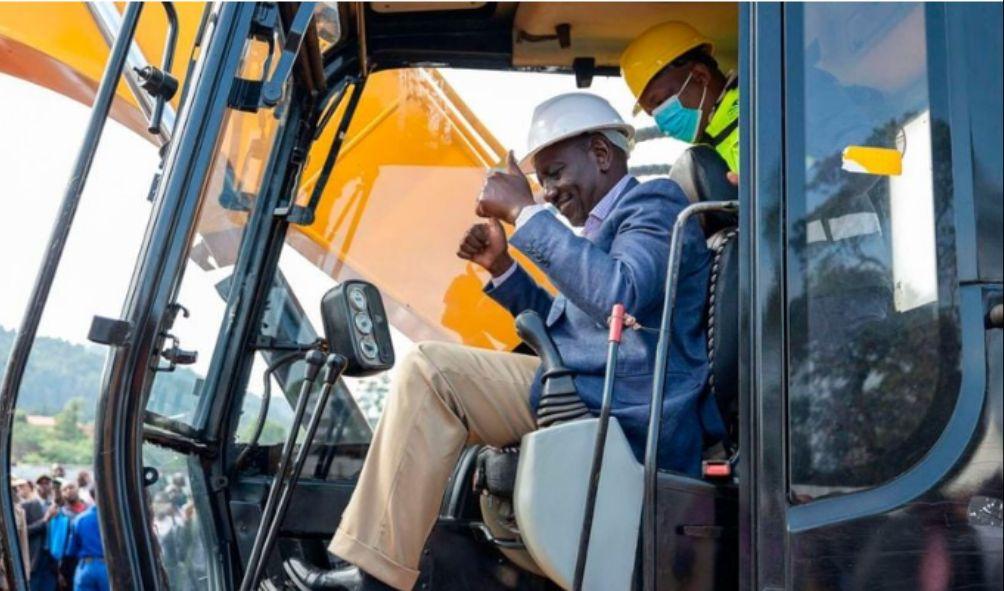MP Kimani Kuria Explains Why Govt Has Been Under Pressure to Launch ‘Ghost’ Projects
Kenya’s escalating debt crisis stems from the final year of President Uhuru Kenyatta’s administration, marked by aggressive borrowing aimed at cementing his legacy.
The fallout from this borrowing spree has become increasingly evident, exposing a disconcerting trail of funds allocated to projects that have since faltered.
Kimani Kuria, Chairman of the Finance and National Planning Committee, has unveiled the depth and intent behind the debt accumulated during Kenyatta’s last year in office.
The nation’s total debt, currently at Ksh10.39 trillion, largely comprises loans taken under Kenyatta’s regime, primarily for ambitious projects that have now devolved into failed ventures.
“Most of the borrowing at the end of the previous administration was driven by pressure to launch projects,” Kuria revealed during an interview with Inooro TV on Tuesday.
Fiscal data from 2022 paints a stark picture. In the months preceding the General Election, Kenyatta’s government borrowed at an unprecedented rate.
Between May and August 2022, the Treasury secured six loans totaling Ksh105 billion, averaging a daily borrowing of Ksh854 million.
The loans were sourced from a blend of bilateral, multilateral, and commercial lenders, underscoring the heavy dependence on foreign credit.
Former Treasury Cabinet Secretary Ukur Yatani confirmed this borrowing spree in a report presented to Parliament.
By August 31, 2022, loan agreements amounting to Ksh105 billion had been finalized, with partial disbursements already in motion.
These financial maneuvers were motivated by a push to inaugurate high-profile projects before Kenyatta’s exit from office.
ALSO READ:
- Kenya Owes Chebukati a Hero’s Farewell for ‘Saving’ Democracy – MP Declares
- HELLFIRE HORROR: Worshippers in Bomet Torch Granny Alive in ‘Satanic Purge’ Ritual(Video)
- Haitian Police Caught in Explosive Feud with Kenyan Peacekeepers? Officials Scramble to Deny Rift
- Raila Odinga’s 2027 Options After Shocking AUC Defeat
- Congo Frees Opposition Leader and Former President’s Ally Jean-Marc Kabund
The rush to deliver visible outcomes before the end of his term led to what Kuria describes as severe resource mismanagement.
In his Inooro TV interview, Kuria highlighted the Standard Gauge Railway (SGR) as an example—a Ksh477 billion project funded by Chinese loans that remains largely underutilized.
Kuria pointed specifically to Phase 2A from Nairobi to Naivasha, completed in 2019 at Ksh150 billion, which has seen minimal usage.
“Most of the borrowed funds were hastily allocated to projects that now seem of dubious value,” Kuria emphasized.
Kenyatta, however, defended his administration’s borrowing during the Madaraka Day celebrations in June 2022.
He argued that the debt was essential to bridge infrastructure gaps and stimulate economic growth.
“We leveraged ‘other people’s money’ to address our infrastructure deficits,” Kenyatta contended.
He cited benefits such as reduced travel times for maize traders and enhanced efficiency of the Standard Gauge Railway (SGR) as proof of the debt-driven projects’ success.
Nonetheless, the legacy of these investments is now under heavy scrutiny. Public debt soared from Ksh1.89 trillion inherited from President Mwai Kibaki to an estimated Ksh8.59 trillion by the end of Kenyatta’s tenure.
Critics argue that this substantial borrowing failed to deliver sustainable or impactful results, with many initiatives falling short of their intended objectives.
This has sparked calls for a comprehensive reassessment of Kenya’s financial and constitutional structures.
Kuria has proposed reviewing the 2010 Constitution to reconsider the viability of all 47 counties and certain constitutional bodies.
He stressed the urgency of realigning national priorities to tackle the country’s financial crisis.
“We’re in a deep hole… It’s time to get our priorities straight,” Kuria asserted. “Many of these loans did not fund projects of genuine relevance.”
MP Kimani Kuria Explains Why Govt Has Been Under Pressure to Launch ‘Ghost’ Projects
